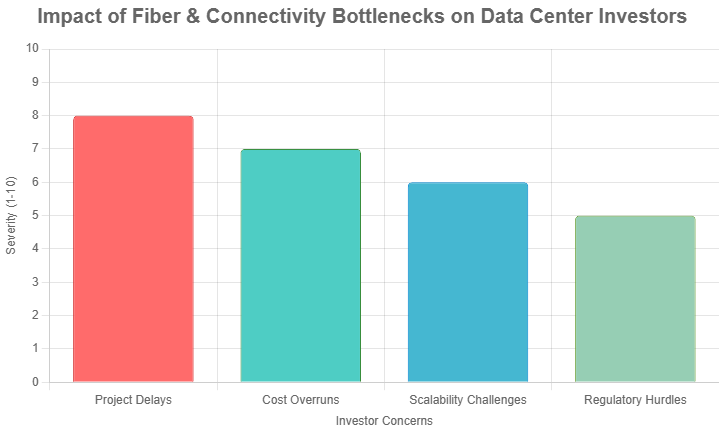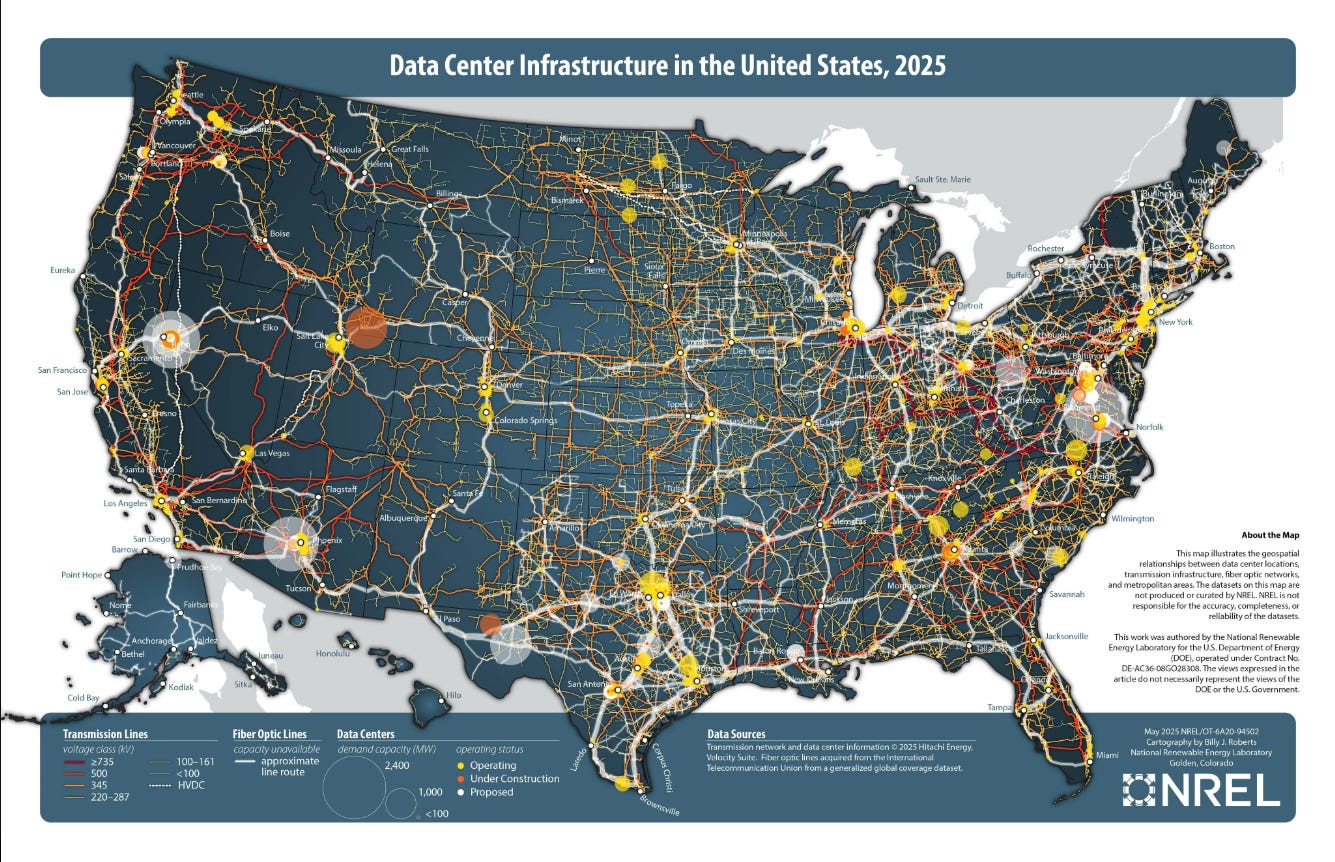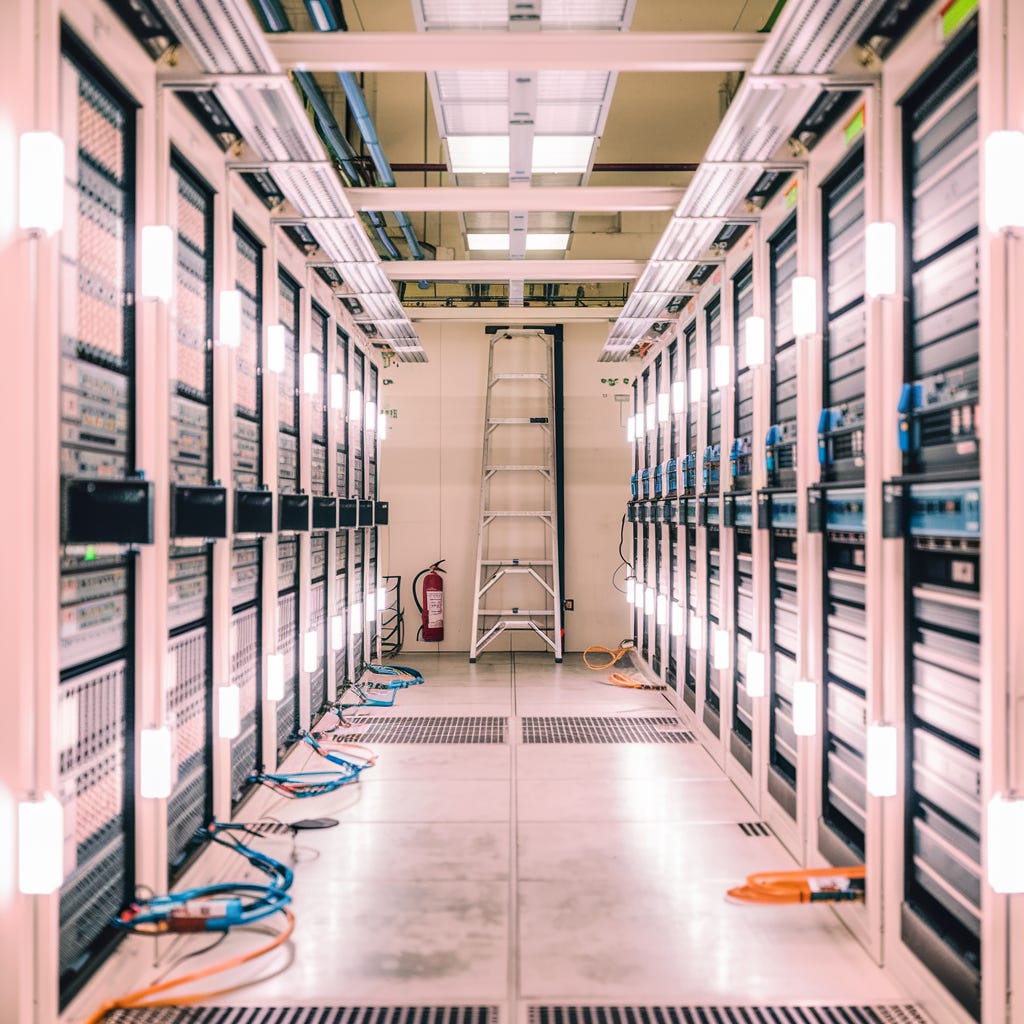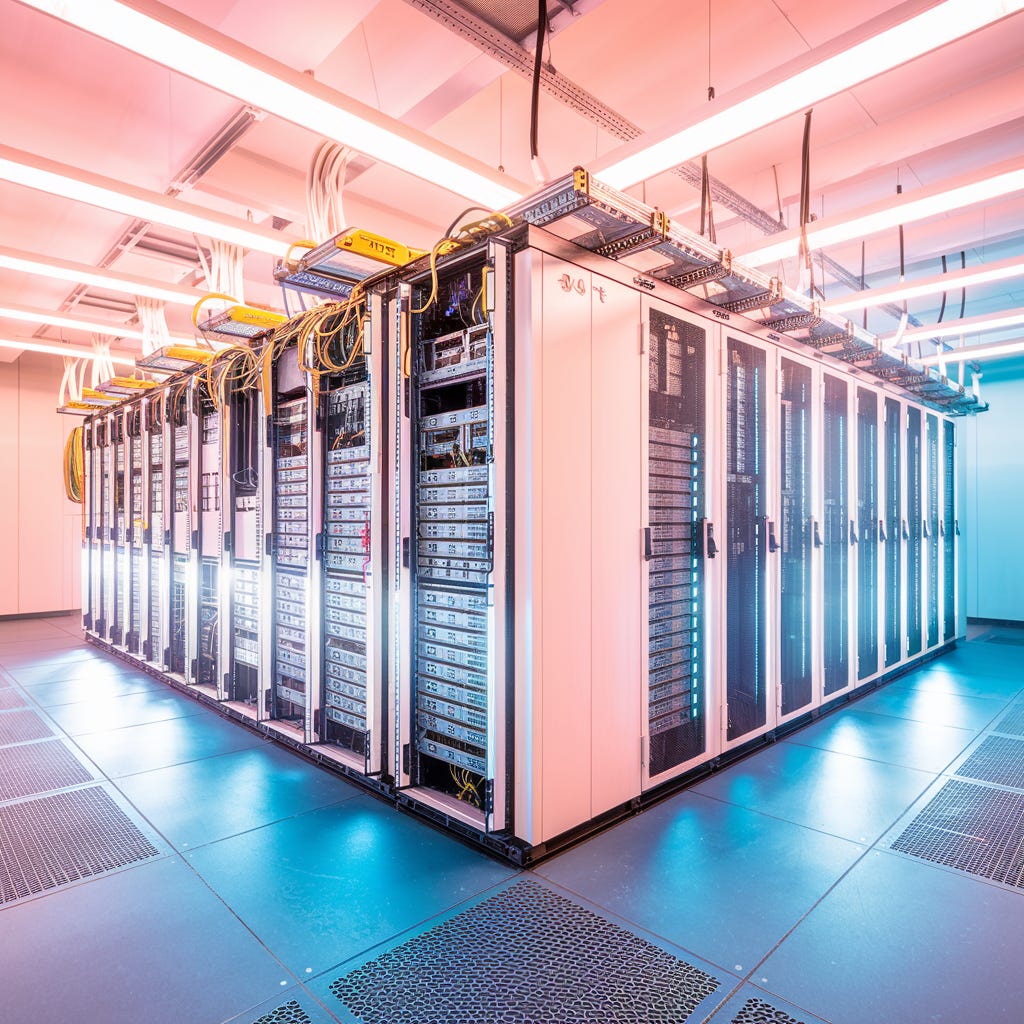Fiber and Connectivity Bottlenecks (Part 1): The Hidden Crisis That Could Derail the Global AI Infrastructure Boom
Power isn't the only bottleneck threatening data center investors. The fiber crunch is quietly becoming the biggest risk to ROI and the smartest investors are adapting fast.
Welcome to Global Data Center Hub. Join 1000+ investors, operators, and innovators reading to stay ahead of the latest trends in the data center sector in developed and emerging markets globally.
Editor’s Note:
This is Part 1 of a two-part series on one of the most underappreciated risks in global AI infrastructure: fiber.
While power availability gets most of the headlines, it's fiber bottlenecks (rising lead times, price shocks, and limited access in key markets) that are quietly killing ROI and delaying billion-dollar projects.
In this piece, we explore why fiber has become the next great bottleneck and how it's reshaping capital allocation, site selection, and investor due diligence.
In Part 2, available to paid subscribers, I break down the exact five-step framework top investors are using to evaluate dark fiber availability before acquiring data center land. Read Part 2 →
The Bottleneck No One Talks About
Power gets the press.
But fiber?
Fiber gets overlooked, until it’s too late.
In 2025, we’re witnessing an underappreciated crisis in global data center infrastructure: fiber and connectivity bottlenecks.
These aren’t just technical problems. They’re capital problems.
Lead times for fiber optic cables ballooned to 60 weeks during the pandemic.
Prices for fiber have surged by as much as 70% since 2021.
Metro dark fiber is highly concentrated, making expansion into secondary markets extremely difficult.
Interconnection backlogs tied to both energy and fiber are pushing project delays out 3 to 5 years.
AI’s hunger for bandwidth has changed the game and most investment playbooks haven’t caught up.
The Rise of Bandwidth-Hungry AI
The AI boom is not just about compute.
It’s about connectivity at scale.
Traditional workloads were content with a few gigabits. AI workloads are bandwidth gluttons.
AI training clusters require 10x more fiber interconnects than legacy applications.
Modern hyperscale facilities demand transmission speeds of 800 Gbps to 1.6 Tbps.
High-strand-count fiber cabling now consumes entire verticals of data center design.
Even minor signal loss can cripple performance for large language models operating across thousands of GPUs.
We’ve entered an era where cabling is not just an operational concern, it’s a strategic differentiator.
The Real-World Impact on Investors
If you're underwriting data center investments in 2025, fiber delays are no longer hypothetical.
They’re showing up on your P&L.
What’s happening on the ground?
Extended construction timelines from fiber and grid interconnect delays increase carrying costs and delay revenue realization.
Pricing volatility for fiber equipment makes budgeting unpredictable.
Geographic constraints mean promising sites may lack usable dark fiber, especially in secondary markets.
Redundancy requirements for AI force operators to secure 24–48 fiber pairs per route, not just one or two.
Power and land may be available. But without high-density fiber access, the economics collapse.
Why Secondary Markets Are Struggling Most
Markets like Northern Virginia, Frankfurt, and Singapore are overloaded, but at least they have fiber.
Emerging AI markets like Las Vegas, Salt Lake City, Phoenix, and Jakarta?
They may have power and land, but fiber access is the limiting factor.
In many of these places:
Metro dark fiber routes are insufficient or overly congested.
Submarine cable access (essential for AI latency) is hours away or non-existent.
Permitting for new routes can take years and costs are spiking.
Investors looking to diversify their footprint must now analyze fiber density the same way they evaluate power availability.
Enter Dark Fiber: Infrastructure Sovereignty
Smart investors are shifting strategies fast.
The most advanced are securing dark fiber (unused strands of fiber) that give operators complete control over:
Bandwidth scalability
Latency and jitter
Redundancy and path diversity
Security and sovereignty of data flows
Unlike lit fiber (leased capacity with carrier-controlled switching), dark fiber gives full ownership of the transmission layer.
This matters more than ever in an AI world where milliseconds and deterministic latency drive competitive edge.
It’s why financial firms use dark fiber to achieve 93-microsecond latency between Chicago and New York.
And why Microsoft and others are doubling or tripling their dark fiber purchases on every route.
What Sophisticated Capital Is Doing Differently
To stay ahead, leading investors are now deploying a three-part strategy:
1. Preemptive Fiber Mapping and Route Due Diligence
Before acquiring land, smart capital is already asking:
How close are we to dense metro fiber?
Are submarine cable landing points within reach?
Can we secure diverse fiber paths for redundancy?
In some markets, this pre-fiber diligence filters out 50% of potential sites.
2. Locking in Long-Term Fiber Supply
Major players like Lumen are locking in multi-year supply agreements with Corning to reserve future capacity.
This isn’t speculative, it’s defensive.
When fiber lead times hit 60 weeks in 2022, entire projects were paused or scrapped.
Now, some investors treat fiber access the same way manufacturers treat critical materials: as a resilience strategy.
3. Vertical Integration and Dark Fiber Investment
In high-growth markets, some investors are funding dark fiber buildouts directly, or launching JVs with infrastructure providers.
The result?
Lower total cost of ownership over 5–10 years
More predictable scalability as AI bandwidth explodes
Strategic control over routing, encryption, and latency
Dark fiber is no longer optional for AI workloads. It’s a requirement.
Beyond Fiber: Subsea and Satellite Considerations
While terrestrial fiber is the most pressing concern, international investors face additional constraints:
Submarine cable permitting is increasingly complex due to environmental reviews and geopolitical risks.
Single points of failure are emerging as multiple hyperscalers cluster near the same landing points.
Latency-sensitive AI services often need global interconnect within 10–20ms—making submarine access critical.
Some are exploring satellite-based alternatives or edge caching models, but these are years away from serving hyperscale AI needs.
The bottom line?
If your AI data center can't plug into low-latency fiber near a subsea cable, it's functionally stranded.
Regulatory Risk Adds Another Layer of Complexity
Don’t forget the final boss: regulation.
U.S. foreign ownership restrictions (CFIUS) may apply to fiber infrastructure.
The BEAD program’s $42.5B public fiber rollout could further strain private supply chains.
Environmental and municipal permitting delays continue to slow route buildout, even when capital is available.
Every one of these factors must now be priced into a fiber risk premium during deal evaluation.
Where the Opportunity Lies
If this all sounds overwhelming, good.
Because the flip side of crisis is asymmetric opportunity.
Investors who learn to underwrite fiber risk, partner with dark fiber providers, and co-develop routes will gain:
Superior speed to market
Access to AI tenants others can’t serve
Margin advantages from latency-sensitive workloads
Strategic control over increasingly scarce infrastructure
Final Take: Fiber Is the Next Moat
You can no longer treat fiber as a utility.
In a world of generative AI, multi-modal models, and real-time compute at scale, fiber is foundational.
It’s the oxygen of AI infrastructure.
Investors who own it—literally or strategically—will own the future.
Want to see how sophisticated investors are embedding fiber diligence into their site selection playbooks step by step?
In Part 2, I break down the exact framework top operators are using to screen, score, and secure dark fiber infrastructure before they deploy capital.
Available exclusively to paid subscribers: Read Part 2 → How to Evaluate Dark Fiber Availability Before Acquiring Data Center Land





